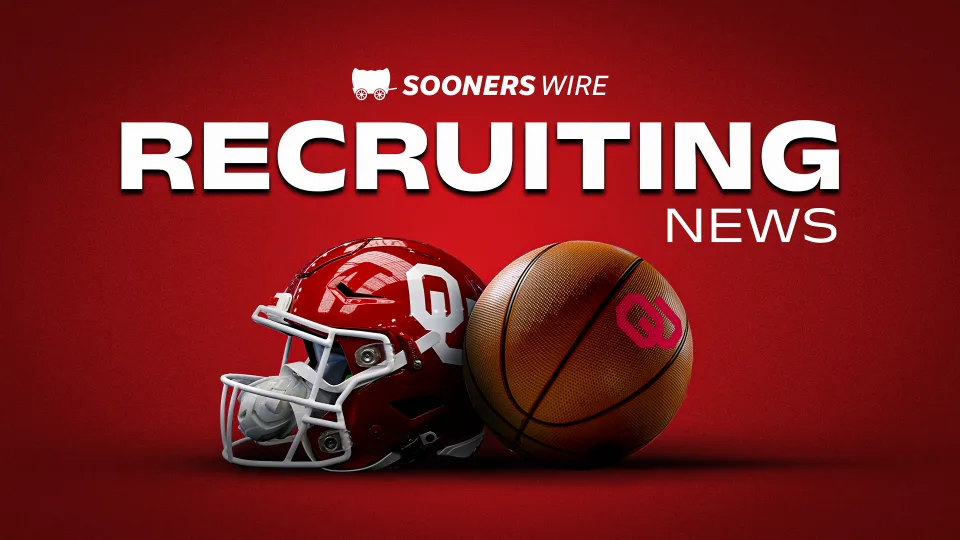
The landscape of college football recruiting is ever-evolving, with young athletes continuously making waves as they cement themselves as future stars. One of the latest developments in the world of college football recruiting comes from a rising star who has generated a great deal of buzz around their name. A highly sought-after wide receiver target for the Oklahoma Sooners has made a decision that is shaking up recruiting circles—the player has reclassified from the 2027 recruiting class to 2026, making their commitment potentially even more impactful for the Sooners than originally anticipated.
Reclassification in college recruiting is not a common occurrence, but when it does happen, it often highlights an athlete’s exceptional talent and development. For many high school athletes, the idea of reclassifying is rooted in the desire to compete at a higher level, whether it’s to get a jump on the competition or simply to position themselves for a better shot at landing a coveted college scholarship. In this case, the reclassification of this wide receiver is making waves for all the right reasons, especially considering the significance of the decision for the Oklahoma Sooners, a program that has experienced a renaissance under head coach Brent Venables.
The decision to reclassify is a bold one for a young athlete. It means the player is speeding up the timeline to their college career, which could have several implications, both in terms of development and their future potential. For most high school athletes, especially those in skill positions such as wide receiver, the time between high school and college is essential for their growth. It’s an opportunity to fine-tune techniques, adapt to a higher level of competition, and strengthen physically. Reclassifying allows a player to accelerate their path to college but also carries the potential challenge of needing to mature and adapt quickly to the demands of college football.
The Oklahoma Sooners, who have made significant strides in recent years to build a program that can compete on a national level, now find themselves in the position of adding this young, dynamic wide receiver to their future plans. The Sooners have had a strong tradition of developing wide receivers, and the addition of this prospect only enhances their ability to continue recruiting top-tier talent at the position. With Oklahoma’s offense often relying on explosive playmakers in the passing game, the addition of a wide receiver with this much potential is crucial to the team’s future.
The Sooners’ coaching staff, led by Venables, have a well-established track record of developing young players and molding them into future stars. Venables, who took over as head coach after a successful tenure as the defensive coordinator at Clemson, has made it clear that Oklahoma’s football program is about more than just recruiting; it’s about player development and building a culture that thrives on excellence. This reclassified wide receiver has the opportunity to be part of that system, potentially contributing as early as their freshman season.
From a recruiting standpoint, the Oklahoma Sooners’ pursuit of top-tier wide receiver talent is part of a broader strategy to solidify their place among the nation’s elite programs. The Sooners have consistently attracted top recruits at various positions, but wide receiver has always been a focal point. With the recent rise in prominence of high-powered passing offenses across the country, having a dynamic wide receiver corps has become a critical component of competing for championships. The Sooners, who have traditionally been known for their explosive passing attacks, have an opportunity to continue building upon that legacy by adding this reclassified receiver to their stable of weapons.
For the player involved, reclassifying to the 2026 class is a significant decision that could have a lasting impact on their college career. It’s clear that the athlete’s potential was recognized early, and the decision to accelerate their path to college is likely indicative of their desire to compete at the highest level as soon as possible. In doing so, they will likely face greater expectations, both from the coaching staff and from themselves. However, it’s also an opportunity to learn, develop, and compete against some of the best players in the country—something that could pay off both on and off the field as they progress through their college years.
This reclassification has added an element of intrigue to an already exciting recruiting cycle. While the 2026 class is still in its early stages, the fact that this wide receiver has made such a significant move only adds to the buzz surrounding the Sooners’ recruiting efforts. It speaks to the program’s growing influence in the college football world and their ability to attract elite talent from around the country. Oklahoma, under Venables, is positioning itself to continue competing at a high level in the Big 12 and beyond, and securing a top-tier wide receiver recruit such as this player is a key part of that strategy.
As the 2026 class continues to develop, more attention will likely be placed on other athletes who follow in the footsteps of this wide receiver. Reclassification is becoming an increasingly popular trend among top prospects, and it’s likely that this trend will continue as athletes look to maximize their potential and accelerate their timeline to college football. However, this particular reclassification stands out due to the player’s immense talent and the potential impact they could have at Oklahoma.
It’s also worth considering the broader implications of this decision within the context of the Sooners’ current roster and the trajectory of their program. Oklahoma has been known for its ability to develop wide receivers who make an immediate impact at the college level. Players like CeeDee Lamb, Hollywood Brown, and others have all gone on to successful NFL careers, and Oklahoma’s ability to develop elite wide receivers will continue to be a key factor in their recruiting efforts. The addition of this reclassified player gives the Sooners a potentially game-changing weapon on the outside, one who could be the next big name in their storied tradition of wide receiver excellence.
In terms of the player’s future, this reclassification opens the door for an exciting and challenging journey. They will have the opportunity to compete with some of the best young athletes in the country, and the expectations will be high from the moment they step on campus. However, for an athlete with this kind of talent, the decision to reclassify could turn out to be the perfect move, allowing them to fine-tune their skills at an earlier stage and potentially accelerate their path to stardom in college football.
Ultimately, the decision to reclassify is a bold and exciting one for both the Oklahoma Sooners and the player involved. It signals that this wide receiver is ready for the challenge of competing at the highest level, and the Sooners’ commitment to developing elite talent means that this player will have every opportunity to reach their full potential. With the 2026 class shaping up to be a crucial one for Oklahoma’s football program, this reclassification is just the beginning of what promises to be an exciting journey for both the athlete and the Sooners. As college football recruiting continues to evolve, one thing is clear: the future of the Oklahoma Sooners’ passing game looks bright, and this reclassified wide receiver could very well be a key part of that future.





